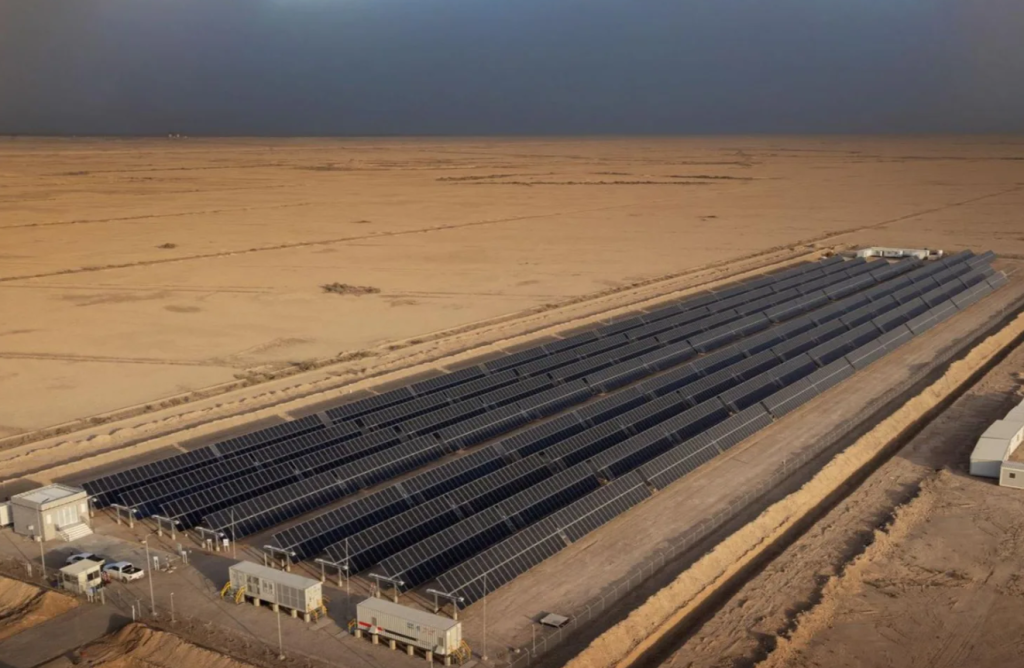On August 25, 2025, in the Kurdistan Region of Iraq, Chinese-made solar equipment has become a key solution for local businesses and residents tackling power shortages, driving the rapid rise of the solar industry in the region with its high cost-effectiveness.
Solar Boom Sweeps Kurdistan: From Art Studios to Households
On the rooftop of Paia Agency, an art studio in Sulaymaniyah, Chinese-made solar panels are powering lights, sewing machines, computers, and air conditioners. Founder Safeen Mohammed stated that the system has reduced monthly electricity costs by approximately $100, with the initial investment of $3,500 expected to pay for itself within two years. According to data from the Sulaymaniyah Electricity Directorate, as of August 4, 2025, 1,033 households and businesses had registered as solar users in the region—double the figure from February—with a total generating capacity of 23.37 MW. The actual number of installations is likely higher, as many off-grid systems are not included in official statistics.
A report by the International Energy Agency (IEA) indicates that in 2021, only 1.1% of Iraq’s electricity came from renewable sources. However, the country plans to add 12 GW of solar capacity by 2030, with 7.5 GW of projects already approved. The Kurdistan Regional Government (KRG) has also launched the “Runaki” initiative to achieve 24-hour stable power supply, though high electricity tariffs are driving more people to adopt solar energy.
Chinese Manufacturing: Cost-Effectiveness Drives Market Adoption
Local installer Halan Akoiy revealed that over 90% of solar equipment comes from China, offering a balance of price and quality that far surpasses European products. For example, Paia Agency’s solar system cost $3,500, while a basic household system starts at $2,000, and high-performance systems can reach up to $15,000. Growing demand has enabled wholesalers and installation companies to further drive down prices through bulk purchasing, creating a virtuous cycle.
China’s leadership in the global solar market provides a solid foundation for this trend. According to The New York Times, Chinese new energy companies are deeply engaged in the Middle East market through platforms such as the Zhongguancun Energy Storage Industry Technology Alliance, dominating global equipment exports in 2023. Analysis by the Arab-China Industrial Research Institute suggests that the energy transition needs of Middle Eastern countries align well with the technological and cost advantages of Chinese companies, highlighting significant potential for cooperation in solar and energy storage.
Practical Needs of Energy Transition: Moving Away from Diesel Dependence
The Kurdistan region has long relied on natural gas-powered grid electricity and hydropower, but daily power supply is limited, forcing businesses and residents to use highly polluting and expensive diesel generators. For Paia Agency, a non-profit organization, the independence and reliability of solar power are particularly crucial. Installer Halan noted that solar systems have low maintenance costs, requiring only periodic panel cleaning. Lead-acid batteries need replacement every three years, while lithium batteries have a longer lifespan, further reducing long-term barriers to adoption.
Although only 1.5% of the Middle East’s electricity came from solar power in 2023, practices in Kurdistan demonstrate that policy support and market drivers are accelerating change. In 2023, the KRG announced plans to build a 25 MW solar power plant near Erbil, and French company TotalEnergies invested in a 1 GW solar project in Basra, reflecting efforts from both governments and multinational corporations.
Future Outlook: Challenges and Opportunities
Despite the rapid adoption of solar energy, its share in Iraq’s energy mix remains low. The IEA predicts global solar investments will reach $500 billion in 2024–2025, a trend echoed in Kurdistan. However, challenges such as delays in large-scale projects and weak grid infrastructure remain unresolved.
Analysts believe that technology transfer and localized cooperation from Chinese companies will be key. The case of Paia Agency demonstrates that solar power not only reduces economic costs but also injects vitality into community activities. As the Belt and Road Initiative aligns with the green transition in the Middle East, Chinese manufacturing is poised to play an increasingly important role in Iraq’s energy revolution, contributing to global carbon neutrality goals.



